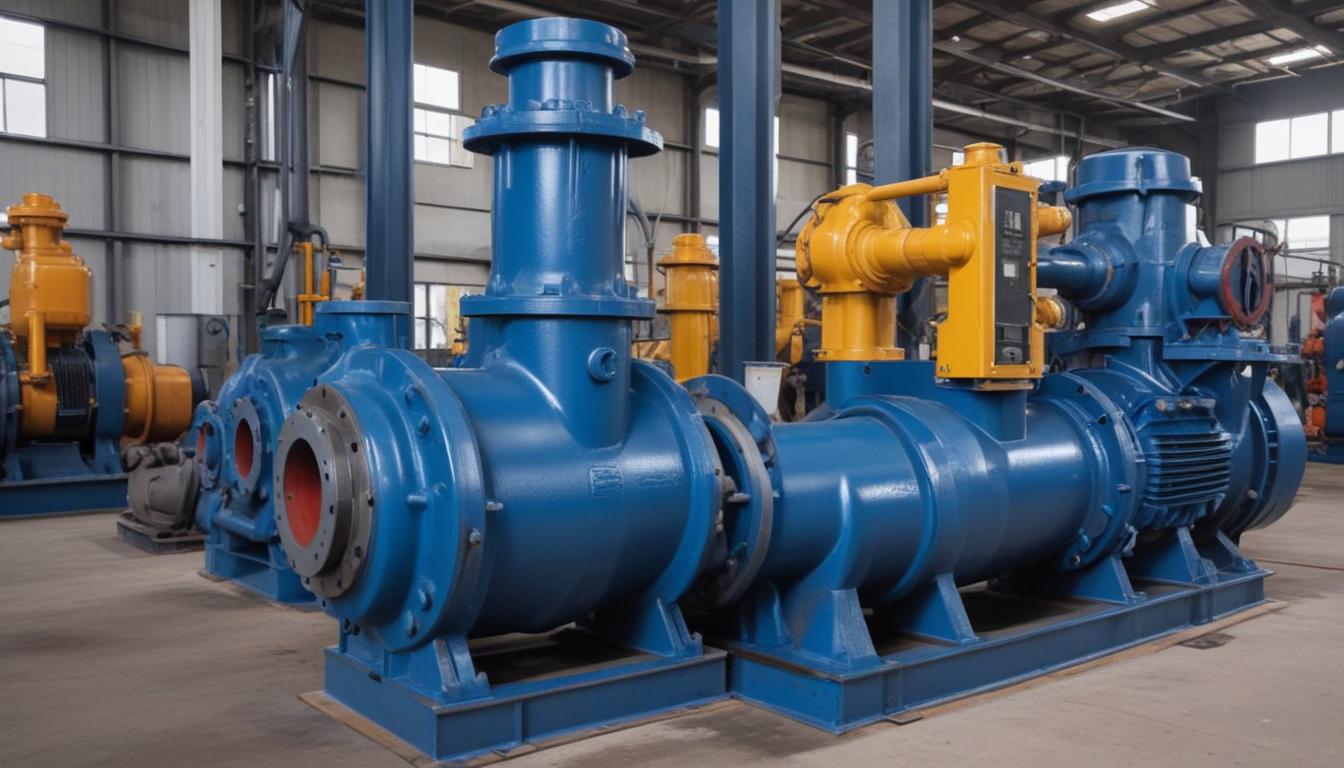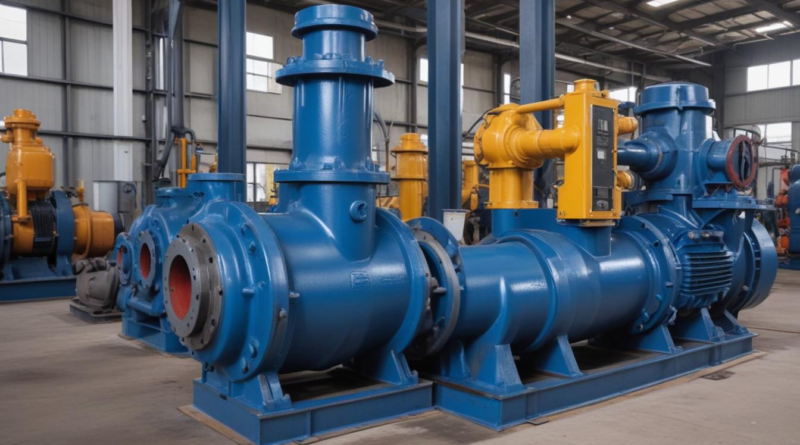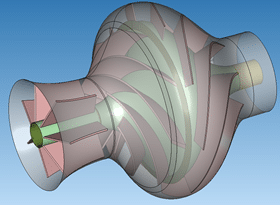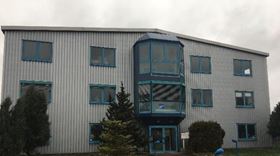how to choose a pump based on reliability and uptime
Evaluating the reliability of a pump is a critical aspect of the pump selection process, ensuring consistent performance and minimizing downtime. Reliable pumps contribute significantly to the overall efficiency of operations, reducing the likelihood of unexpected failures and maintenance costs. To effectively assess pump reliability, consider the following criteria:
- Mean Time Between Failures (MTBF): This metric indicates the average time a pump operates before experiencing a failure. A higher MTBF signifies greater reliability.
- Build Quality: The materials and construction of the pump influence its durability and resistance to wear and tear.
- Design Specifications: Pumps designed with redundancy, proper sealing, and protection against environmental factors tend to be more reliable.
- Operational History: Reviewing the pump’s performance history in similar applications can provide insights into its reliability.
- Manufacturer Reputation: Established manufacturers with a track record of producing dependable pumps are often preferable choices.
A systematic approach to assessing reliability involves both qualitative and quantitative analyses. The table below outlines key factors and their corresponding evaluation methods:
| Factor | Evaluation Method |
|---|---|
| MTBF | Analyze historical failure data and manufacturer-provided statistics. |
| Build Quality | Inspect materials, construction techniques, and compliance with industry standards. |
| Design Specifications | Review design features that enhance reliability, such as redundant systems and protective measures. |
| Operational History | Assess case studies and user testimonials related to pump performance. |
| Manufacturer Reputation | Evaluate the manufacturer’s track record, customer reviews, and industry certifications. |
In addition to these criteria, conducting reliability testing under simulated operating conditions can provide valuable data on how a pump performs under stress. Implementing predictive maintenance strategies, such as monitoring vibration, temperature, and flow rates, can further enhance reliability by addressing potential issues before they lead to failures.
Ultimately, a comprehensive assessment of pump reliability involves a combination of detailed criteria evaluation, empirical data analysis, and proactive maintenance planning. This ensures that the selected pump not only meets the immediate operational needs but also sustains high performance over its intended lifecycle.
Understanding uptime requirements
Uptime is a paramount consideration in the pump selection process, directly impacting operational continuity and productivity. Understanding the specific uptime requirements for your application ensures that the chosen pump can sustain constant performance without frequent interruptions. To accurately determine these requirements, consider the following criteria:
- Operational Criticality: Assess how essential the pump is to your overall operations. Critical systems that cannot afford downtime demand higher uptime standards.
- Production Schedules: Align uptime requirements with your production timelines. Continuous manufacturing processes, for example, require pumps with near 100% uptime to prevent bottlenecks.
- Environmental Conditions: Harsh or variable environments may necessitate pumps that can maintain high uptime despite challenging operating conditions.
- Maintenance Capabilities: Evaluate your ability to perform regular maintenance. Pumps that support quick and easy maintenance can achieve higher effective uptime.
- Redundancy Needs: Determine if redundant pump systems are necessary to achieve desired uptime levels, especially in mission-critical applications.
A thorough analysis of these factors will help in establishing a clear set of uptime requirements tailored to your specific needs. The table below illustrates common applications and their typical uptime expectations:
| Application | Typical Uptime Requirement |
|---|---|
| Chemical Processing | 99.9% uptime to ensure continuous chemical reactions and prevent safety hazards. |
| Water Treatment | 99.95% uptime to maintain consistent water quality and supply. |
| Oil and Gas | 99.99% uptime due to the high costs and risks associated with downtime. |
| Pharmaceutical Manufacturing | 99.98% uptime to comply with strict regulatory standards and ensure product integrity. |
| Food and Beverage | 99.9% uptime to support continuous production lines and meet demand. |
In addition to application-specific requirements, it is essential to factor in potential downtime impacts, such as financial losses, safety risks, and reputational damage. Conducting a risk assessment can help quantify these impacts and prioritize uptime objectives accordingly. Furthermore, integrating predictive analytics and real-time monitoring systems can enhance your ability to meet uptime targets by anticipating and mitigating issues before they lead to failures.
Establishing clear uptime requirements not only guides the pump selection process but also informs the design of maintenance strategies and operational protocols. By aligning pump capabilities with your uptime needs, you ensure sustained operational efficiency and reliability, ultimately supporting your organization’s long-term success.
Evaluating pump technologies
When evaluating the various pump technologies available, it’s crucial to consider how each type aligns with your specific operational needs and reliability standards. Different pump technologies offer unique advantages and are suited to particular applications, environments, and performance criteria. To make an informed decision, assess each technology based on the following criteria:
- Performance Efficiency: Evaluate the energy efficiency and flow characteristics of each pump technology to ensure optimal performance for your application.
- Reliability: Consider the historical reliability of the technology, including common failure modes and maintenance requirements.
- Maintenance Requirements: Assess the ease of maintenance, availability of spare parts, and the complexity of servicing each pump type.
- Cost of Ownership: Analyze the initial purchase price, operating costs, and long-term maintenance expenses associated with each technology.
- Environmental Compatibility: Determine how each pump technology performs under specific environmental conditions, such as temperature extremes or corrosive substances.
- Scalability and Flexibility: Consider the ability to scale the pump system and adapt to changing operational demands.
The table below provides a comparative overview of common pump technologies based on these criteria:
| Pump Technology | Performance Efficiency | Reliability | Maintenance Requirements | Cost of Ownership | Environmental Compatibility | Scalability and Flexibility |
|---|---|---|---|---|---|---|
| Centrifugal Pumps | High efficiency for high flow rates | Generally reliable with fewer moving parts | Low to moderate; regular lubrication needed | Moderate initial cost, low operating costs | Suitable for a wide range of environments | Highly scalable and adaptable |
| Positive Displacement Pumps | Efficient at low flow rates and high pressures | Very reliable for precise dosing applications | Moderate to high; requires precise maintenance | Higher initial cost, variable operating costs | Effective with viscous and abrasive fluids | Flexible for specific, niche applications |
| Turbine Pumps | Excellent for medium flow and head applications | High reliability with appropriate sizing | Low; minimal moving parts | Moderate initial and operating costs | Best for clean, non-corrosive fluids | Limited scalability; best for specific ranges |
| Gear Pumps | Consistent performance for hydraulic systems | Reliable for continuous operation | Moderate; requires regular inspection | Lower initial cost, moderate operating costs | Suitable for lubricating oils and similar fluids | Less scalable; fixed performance characteristics |
| Diaphragm Pumps | Efficient for handling corrosive and abrasive fluids | Highly reliable with sealed systems | Low to moderate; easy to maintain seals | Variable costs depending on application | Excellent for harsh and hazardous environments | Flexible for a variety of flow and pressure needs |
In addition to the above criteria, it’s important to evaluate emerging pump technologies that incorporate advanced materials, smart monitoring systems, and energy-saving features. Technologies such as magnetic drive pumps, which eliminate the need for seals and reduce maintenance, or smart pumps equipped with IoT sensors for real-time performance monitoring, can significantly enhance reliability and uptime.
Energy efficiency is another pivotal factor, as more efficient pumps not only reduce operational costs but also contribute to sustainability goals. Selecting a pump technology that balances energy consumption with performance requirements can lead to substantial long-term savings and environmental benefits.
Moreover, consider the compatibility of the pump technology with your existing infrastructure and systems. Integration ease can influence both the initial installation process and the ongoing operational efficiency. For example, centrifugal pumps often integrate seamlessly with a variety of piping systems and control mechanisms, making them a versatile choice for many applications.
Finally, assess the availability of technical support and the level of expertise required to operate and maintain each pump technology. Technologies with extensive manufacturer support and readily available technical resources can enhance overall reliability and ensure quick resolution of any issues that may arise.
By meticulously evaluating pump technologies against these criteria, you can identify the most suitable option that not only meets your current operational needs but also supports future growth and sustainability objectives. This comprehensive approach to pump selection ensures that you invest in a solution that delivers consistent reliability and maximizes uptime, ultimately contributing to the efficiency and success of your operations.
Maintenance and support considerations
 Effective maintenance strategies are essential to ensuring the long-term reliability and optimal performance of your pump system. Proper maintenance not only extends the lifespan of the pump but also minimizes unexpected downtimes, thereby enhancing overall operational uptime. When considering maintenance and support, several key factors should be evaluated to align with your specific needs and operational criteria:
Effective maintenance strategies are essential to ensuring the long-term reliability and optimal performance of your pump system. Proper maintenance not only extends the lifespan of the pump but also minimizes unexpected downtimes, thereby enhancing overall operational uptime. When considering maintenance and support, several key factors should be evaluated to align with your specific needs and operational criteria:
- Maintenance Types: Understanding the various maintenance approaches is crucial for selecting the appropriate strategy for your pump system.
- Spare Parts Availability: Ensuring easy access to replacement parts can significantly reduce repair times and maintain continuous operations.
- Service Agreements: Comprehensive service contracts can provide regular maintenance, quick response times, and expert support.
- Technical Support: Access to knowledgeable technical assistance ensures that any issues are promptly and effectively addressed.
- Training and Documentation: Adequate training for your maintenance team and comprehensive documentation facilitate efficient upkeep and troubleshooting.
Implementing a robust maintenance plan involves selecting the right combination of maintenance types and support services. The table below outlines common maintenance strategies and their respective benefits:
| Maintenance Type | Description | Benefits |
|---|---|---|
| Preventive Maintenance | Scheduled inspections and servicing based on manufacturer recommendations and usage patterns. | Reduces the likelihood of unexpected failures and extends pump lifespan. |
| Predictive Maintenance | Utilizes data-driven techniques such as vibration analysis and thermal imaging to predict potential issues. | Allows for maintenance to be performed only when necessary, optimizing resource use and minimizing downtime. |
| Reactive Maintenance | Addresses issues only after a failure has occurred. | Can be cost-effective for non-critical applications but may lead to longer downtimes. |
| Condition-Based Maintenance | Monitors the actual condition of the pump to determine the need for maintenance. | Ensures maintenance is performed based on real-time data, enhancing reliability and efficiency. |
In addition to maintenance strategies, selecting a supplier that offers comprehensive support services is vital. Consider the following criteria when evaluating support options:
- Response Time: The speed at which the vendor can respond to service requests affects overall pump uptime.
- Expertise: Technical expertise and specialized knowledge ensure effective troubleshooting and repairs.
- Availability of Parts: A wide inventory of spare parts minimizes delays in maintenance and repairs.
- Warranty and Guarantees: Robust warranty terms provide assurance of product quality and vendor commitment.
- Customer Support: Accessible and responsive customer service enhances the overall maintenance experience.
Establishing a strong relationship with a reliable vendor can provide additional benefits such as priority service, extended warranties, and access to the latest technological advancements. The table below highlights key support features to consider during vendor selection:
| Support Feature | Importance |
|---|---|
| 24/7 Customer Service | Ensures assistance is available whenever needed, reducing potential downtime. |
| On-Site Support | Facilitates quicker repairs and maintenance directly at your facility. |
| Technical Training | Empowers your team to handle routine maintenance and minor issues effectively. |
| Spare Parts Inventory | Availability of key components speeds up repairs and minimizes operational interruptions. |
| Maintenance Documentation | Comprehensive guides and manuals support effective maintenance practices. |
Furthermore, incorporating advanced maintenance technologies can enhance support capabilities. Tools such as remote monitoring systems, IoT-enabled devices, and automated diagnostic software provide real-time insights into pump performance and health. These technologies enable proactive maintenance actions, ensuring that issues are identified and addressed before they escalate into significant problems.
Investing in regular training and development for your maintenance team is equally important. Well-trained personnel are better equipped to perform maintenance tasks efficiently, adhere to maintenance schedules, and utilize diagnostic tools effectively. Comprehensive training programs and ongoing education ensure that your team remains knowledgeable about the latest maintenance techniques and pump technologies.
In summary, effective maintenance and support are pivotal components of the pump selection process, directly impacting the system’s reliability and uptime. By carefully evaluating maintenance strategies, support services, and technological enhancements, you can establish a maintenance program that ensures sustained pump performance and operational efficiency.
Selecting the right vendor
Choosing the appropriate vendor is a crucial step in the pump selection process, as it directly influences the overall reliability and uptime of your pump system. A dependable vendor not only provides high-quality products but also offers comprehensive support and services that ensure sustained performance. When evaluating potential vendors, consider the following criteria to make an informed decision:
- Product Quality and Range: Assess the vendor’s portfolio to ensure they offer pumps that meet your specific operational requirements. A diverse product range indicates the ability to cater to various applications and environments.
- Reputation and Experience: Look for vendors with a proven track record and extensive experience in the industry. Established vendors are more likely to deliver reliable products and services based on their history and customer feedback.
- Technical Expertise: Evaluate the vendor’s technical support capabilities. Access to knowledgeable engineers and technical staff can provide valuable assistance during installation, troubleshooting, and maintenance.
- After-Sales Support: Comprehensive after-sales services, including maintenance contracts, spare parts availability, and prompt technical support, are essential for minimizing downtime and ensuring continuous operations.
- Warranty and Guarantees: Robust warranty terms reflect the vendor’s confidence in their products. Ensure that the warranty covers essential components and offers adequate protection against defects and failures.
- Compliance and Certifications: Verify that the vendor adheres to industry standards and possesses relevant certifications. Compliance with regulations ensures that the pumps meet quality and safety benchmarks.
- Customer Service: Responsive and accessible customer service is vital for addressing issues promptly. Evaluate the vendor’s communication channels and their ability to provide timely support.
To systematically compare potential vendors, the table below outlines key factors and their respective evaluation methods:
| Factor | Evaluation Method |
|---|---|
| Product Quality and Range | Review the vendor’s catalog, product specifications, and case studies to assess suitability for your applications. |
| Reputation and Experience | Examine customer testimonials, industry reviews, and the vendor’s history in the market. |
| Technical Expertise | Assess the qualifications of the technical team and the availability of expert support services. |
| After-Sales Support | Evaluate the scope of maintenance contracts, availability of spare parts, and response times for support requests. |
| Warranty and Guarantees | Analyze the terms and coverage of warranties, including duration and components covered. |
| Compliance and Certifications | Verify adherence to industry standards and possession of relevant certifications such as ISO or ANSI. |
| Customer Service | Test the responsiveness of customer service channels and the quality of interactions with vendor representatives. |
Additionally, consider the vendor’s ability to provide customized solutions and their flexibility in accommodating specific project requirements. Vendors that offer tailored services and demonstrate a willingness to collaborate can better support your unique operational needs, thereby enhancing the overall reliability and uptime of your pump systems.
Establishing a strong partnership with the right vendor can lead to long-term benefits, including access to the latest technological advancements, priority service, and ongoing support that adapts to evolving operational demands. It is advisable to conduct thorough due diligence, including site visits, reference checks, and pilot testing, to ensure that the chosen vendor aligns with your quality standards and operational objectives.
By meticulously evaluating these criteria, you can select a vendor that not only provides high-quality pumps but also offers the necessary support and services to maintain optimal performance and reliability. This strategic selection process is integral to achieving sustained operational excellence and minimizing disruptions in your pump-dependent systems.




Pingback: Tips to Select the Best Constant Flow Pump - ANTITECK
Pingback: Piston Pumps vs Rotary Pumps Understanding the Key Differences - ANTITECK